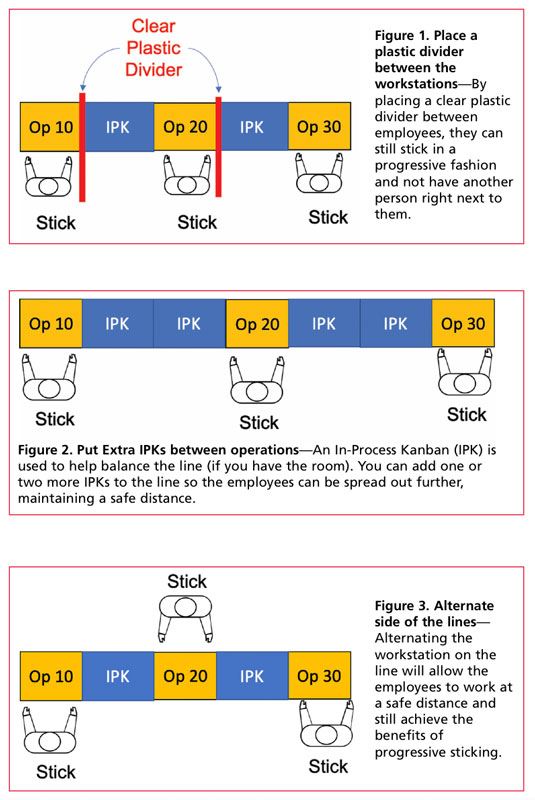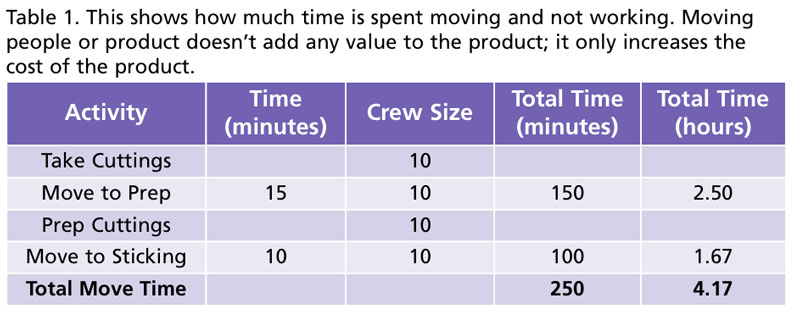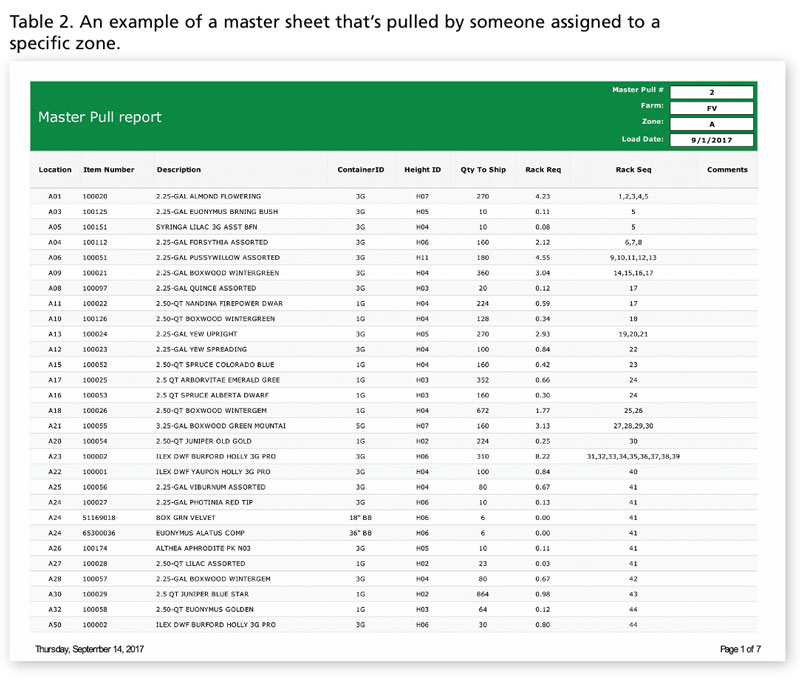8/1/2020
Being Efficient in a New Normal
Gary Cortés
 This year is one for the record books—both in terms of all the craziness with COVID-19 and unbelievable sales for many growers. From talking with many of our customers, it’s been a really good year in terms of sales. Growers who do online business saw a huge increase in sales, as did most growers in the South, as well as the Midwest. Unfortunately for some growers in the Northeast—like New York, New Jersey and Connecticut, as well as Michigan, it was a very slow start due to the lockdowns. However, even growers in these states have seen very good sales in May and June, many of them making up for some of the loss sales early on.
This year is one for the record books—both in terms of all the craziness with COVID-19 and unbelievable sales for many growers. From talking with many of our customers, it’s been a really good year in terms of sales. Growers who do online business saw a huge increase in sales, as did most growers in the South, as well as the Midwest. Unfortunately for some growers in the Northeast—like New York, New Jersey and Connecticut, as well as Michigan, it was a very slow start due to the lockdowns. However, even growers in these states have seen very good sales in May and June, many of them making up for some of the loss sales early on.
The one thing that holds true for many of those growers is that their inefficiencies really stood out. For the growers that were setting record sales, they realized their processes weren’t capable of keeping up with demand and they were working many late nights. For growers who had a late start, they realized when they were able to open up they needed a way to increase their productivity and profitability.
With all of the guidelines from the Centers for Disease Control (CDC) on social distancing and not having people in large crowds, growers need to keep their employees safe while at the same time being efficient. The question now is how you maintain your efficiency or even increase it while abiding by the guidelines. These guidelines may become the “New Normal.”
If you’ve been impacted by COVID-19 (who hasn’t in one way or another?), lean principles can help you improve your efficiency in the new normal. Here are several Lean Flow principles that you should implement to help keep your employees safe and also improve your efficiency.
Smaller crews—Longer hours
The concept of having a smaller crew doing the work for longer hours may not sound like the right thing to do, but it’s very efficient. Many growers will put a big crew to several tasks throughout the day. They may have them take cuttings, then move them to prep the cuttings and then move them again to go stick the cuttings. The constant movement of the crews is considered non-value-added work. Moving people or product doesn’t add any value to the product; it only increases the cost of the product.
 In the case of the cuttings, let’s walk through how a smaller crew is more efficient … Let’s say we have a crew of 10 employees and they all take their cuttings, move to prep, prep them, and then move to propagation and stick them. Table 1 shows how much time is spent moving and not working. The move time of 15 and 10 minutes in most cases is optimistic. Every time you move a crew it usually takes longer than you think. The total move time is over four hours. How many cuttings can a person, take, prep or stick in four hours? A lot.
In the case of the cuttings, let’s walk through how a smaller crew is more efficient … Let’s say we have a crew of 10 employees and they all take their cuttings, move to prep, prep them, and then move to propagation and stick them. Table 1 shows how much time is spent moving and not working. The move time of 15 and 10 minutes in most cases is optimistic. Every time you move a crew it usually takes longer than you think. The total move time is over four hours. How many cuttings can a person, take, prep or stick in four hours? A lot.
If the crew is split up and all of the work is done progressively (simultaneously), the move time goes away. Using our lean mathematical calculations, we would put a portion of the crew to take cuttings, they send the cuttings to the prep process where a set of employees prep them and then they pass on the cuttings to the stickers. In this scenario, all of the work is going on at the same time. No wasted move time and the cutting gets stuck quicker. The product is flowing and not being processed in a batch. The result is better productivity and better quality.
Progressive sticking
Progressive sticking is a technique that we’ve been implementing for over 17 years. It’s proven to be the most efficient way to stick and also improves the quality of the product.
In a progressive sticking line, we typically set up a line where three employees work on an assembly line. The first person does the first third of the tray, the second person does the second third and the last person finishes the tray. In most of the lines, the employees are close to one another so they can easily pass the tray down to the next person. Figures 1 through 3 show three options that abide by the CDC guidelines and at the same time don’t lose productivity.
Zone and master pulling
Zone and master pulling is the most efficient way to pull/harvest product. Instead of having a crew of people moving from one location to another pulling product by order, have them pull by “master.” Master pulling is a concept where multiple loads of orders are combined together. Combining them and assigning a person or a small crew to a zone to pull product from that zone makes the process more efficient.
 Let’s compare the difference between master and zone pulling vs. pulling by order. In zone pulling, we calculate how many people are needed in each zone based on the day’s customer demand. The puller is assigned to the zone and all they do is pull product from their zone based off of a master pull sheet (shown in Table 2). By staying in their zone, they keep their area organized, they know which plants are ready to ship and which plants need more time. They pull the product and put it on a rack or wagon and then there’s a material handler (driver) who takes the full rack/wagon to the loading dock and brings back empty ones.
Let’s compare the difference between master and zone pulling vs. pulling by order. In zone pulling, we calculate how many people are needed in each zone based on the day’s customer demand. The puller is assigned to the zone and all they do is pull product from their zone based off of a master pull sheet (shown in Table 2). By staying in their zone, they keep their area organized, they know which plants are ready to ship and which plants need more time. They pull the product and put it on a rack or wagon and then there’s a material handler (driver) who takes the full rack/wagon to the loading dock and brings back empty ones.
If you pull product by order, there’s typically a crew of people and what they do is drive to all the different locations in the nursery or greenhouses to pull product based on the order. The issue is that you now have a crew of people riding in the wagon at a close distance for long periods of time. The other issue is all the non-value-added moving that’s going on.
With zone and master pulling, the crew size is smaller and the driver is the only person moving the product to the loading dock.
There are ways to abide by the CDC guidelines for social distancing without impacting the efficiency of your operations. These are just a few tips you can incorporate at your nursery or greenhouse operation so that you can be “safe and lean.” GT
To learn more about Lean Flow, visit flowvision.com or contact Gary Cortés at cortes@flowvision.com.